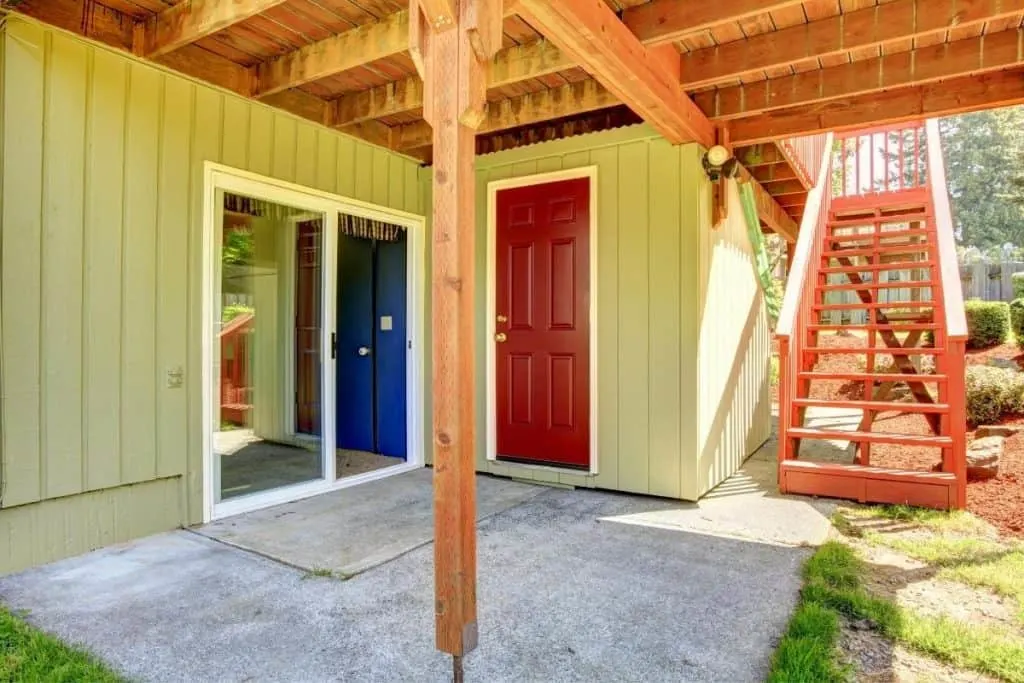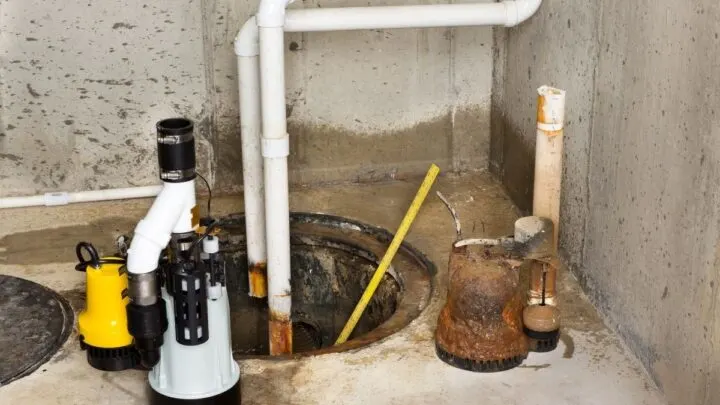Many people wonder if finished basements need sump pumps. After all, shouldn’t the finishing process have the necessary precautions to prevent flooding?
Sump pumps are not required in a finished basement, but they are still a worthwhile addition because they protect the home from moisture damage and flooding. Proactively protecting the house is particularly important if it has a history of flooding or signs of previous water damage.
Take a look at what every homeowner should know about adding a sump pump to a finished basement!
Reasons Why a Sump Pump May Be Needed
Some homeowners simply add sump pumps proactively to protect against potential moisture problems that can destroy basements and foundations.
However, sump pumps are strongly recommended for these situations:
- There’s a history of flooding, visible moisture or signs of water damage.
- Drainage is poor near a home’s foundation.
- The terrain slopes toward a home.
- The home is located in an area with a high water table.
- A home is located in a low-lying area.
- A home is located in an area that gets heavy precipitation in the form of snow or rain.
- Expensive heating and cooling systems are located in the basement.
- Allergies make it necessary to prevent mold and mildew caused by basement dampness.
Why are sump pumps recommended more for finished basements versus unfinished basements?
It’s not because the act of finishing a basement causes flooding. A finished basement simply masks moisture and drainage issues more than an unfinished basement.
How Does a Sump Pump Work in a Finished Basement?
Sump pumps are designed to direct water away from a home’s foundation.
First, a basement sump pump is installed at the lowest point of the basement floor. A sump pump consists of a motorized pump, a “pit” and a pipe.
Placement for a sump pump is picked based on the fact that water naturally flows to the lowest point in a basement.
The sump pump’s fan-like motor will activate to begin pumping water if water levels reach a certain threshold. Next, a water-collecting pit collects any water that enters the area. Lastly, the discharge pipe that leads outside directs water away from the foundation.
Due to the fact that most sump pumps run using a home’s electricity, it’s recommended that homeowners use a battery backup system to protect against power outages during big storms that could cause flooding.
Yes, a sump pump will leave a “hole” in your basement floor. The good news is that there are many great ways to hide a sump pump that will be discussed just a little further down.

Should Every Basement Have a Sump Pump?
Sump pumps are recommended for all homes in areas that are prone to flooding. What’s more, any home that is potentially vulnerable to flooding based on everything from local weather trends to a lot’s configuration should also have a sump pump.
Most homes can benefit from basement sump pumps. The American Society of Home Inspectors estimates that 60 percent of homes in the United States have wet basements.
Homeowners need to make judgment calls when deciding to install sump pumps. The obvious decision is to install a sump pump if your basement has ever flooded in the past. However, the decision isn’t as obvious if you haven’t experienced basement flooding.
What’s the case for getting a sump pump even if flooding isn’t a problem yet?
In addition to preventing flooding, a sump pump helps to preserve your foundation by stabilizing the soil surrounding your home. Sump pumps can even increase resale value by giving buyers peace of mind.
One thing is clear!
The time to install a sump pump is before finishing a basement whenever possible. Installing a sump pump before finishing a basement protects you against the dangers of flooding that will be concealed by new floors and sheetrock.
First, water-damage restoration costs thousands. In addition, homeowners stand to lose a lot of money by allowing finished basements containing thousands of dollars of flooring, building materials, furniture, electronics, and personal items to get flooded.
Long-term mold and mildew problems that linger after a basement has flooded can easily turn a “dream” finished basement into an inhospitable area of the house that raises health and safety issues.
Why Doesn’t My Basement Have a Sump Pump?
If your basement doesn’t have a sump pump, it may be that the builder or previous owner determined that there wasn’t a need for one. Your home may be dry enough to not require extra assistance with directing water away from your foundation.
It’s also possible that a missing sump pump is simply the result of neglect. Some homeowners decide to ignore moisture problems if they aren’t interested in investing in a home that they plan to eventually sell.
Homeowners with unfinished basements may decide to simply “live with flooding” if they don’t have valuable items located in the basement that are vulnerable to water damage.
Some homeowners may not realize that flooding is an issue. If a homeowner finishes a basement in a newly purchased home before the wet season arrives, they may be unaware that water is coming into the home because the new flooring hides telltale moisture signs.
How to Hide a Sump Pump in a Finished Basement
Some people are concerned that sump pumps are unattractive. The fact of the matter is that nothing is as unattractive as a wet, dank basement with mildew odors.
A visible sump pump is a small price to pay for preserving the integrity of a finished basement!
There are some hacks for hiding and disguising sump pumps. Take a look:
- Build a pillar from sheetrock to encase the area around the hole.
- Wall off the area to create a “sump pump closet.”
- Build sliding barn doors to block off the area with the hole.
- Purchase a folding room divider to place around the hole.
- Place a large potted plant in front of the hole.
- Build a built-in chest seat over the hole.
- Add removable flooring over the hole.
Ideally, your contractor will work with you to create discreet placement.
The Verdict: Do Finished Basements Need Sump Pumps?
The answer is that most finished basements will benefit from adding a sump pump. Installing a sump pump can be a great investment for preserving the beauty and safety of a finished basement.
The bottom line is that sump pumps are recommended in finished basements that are vulnerable to moisture and flooding.


